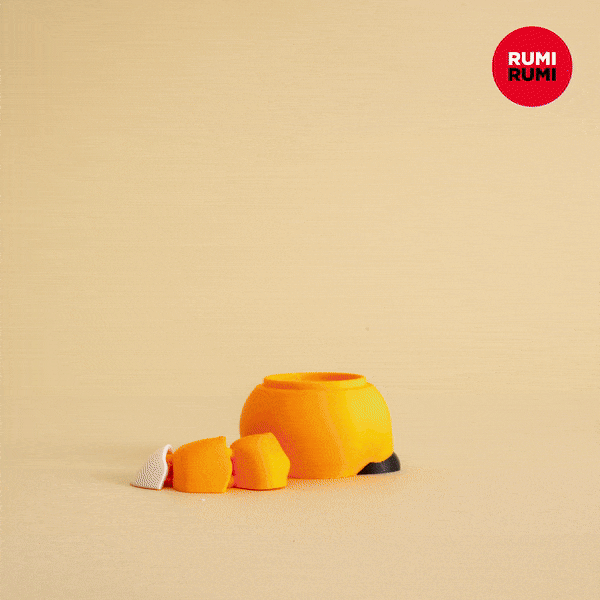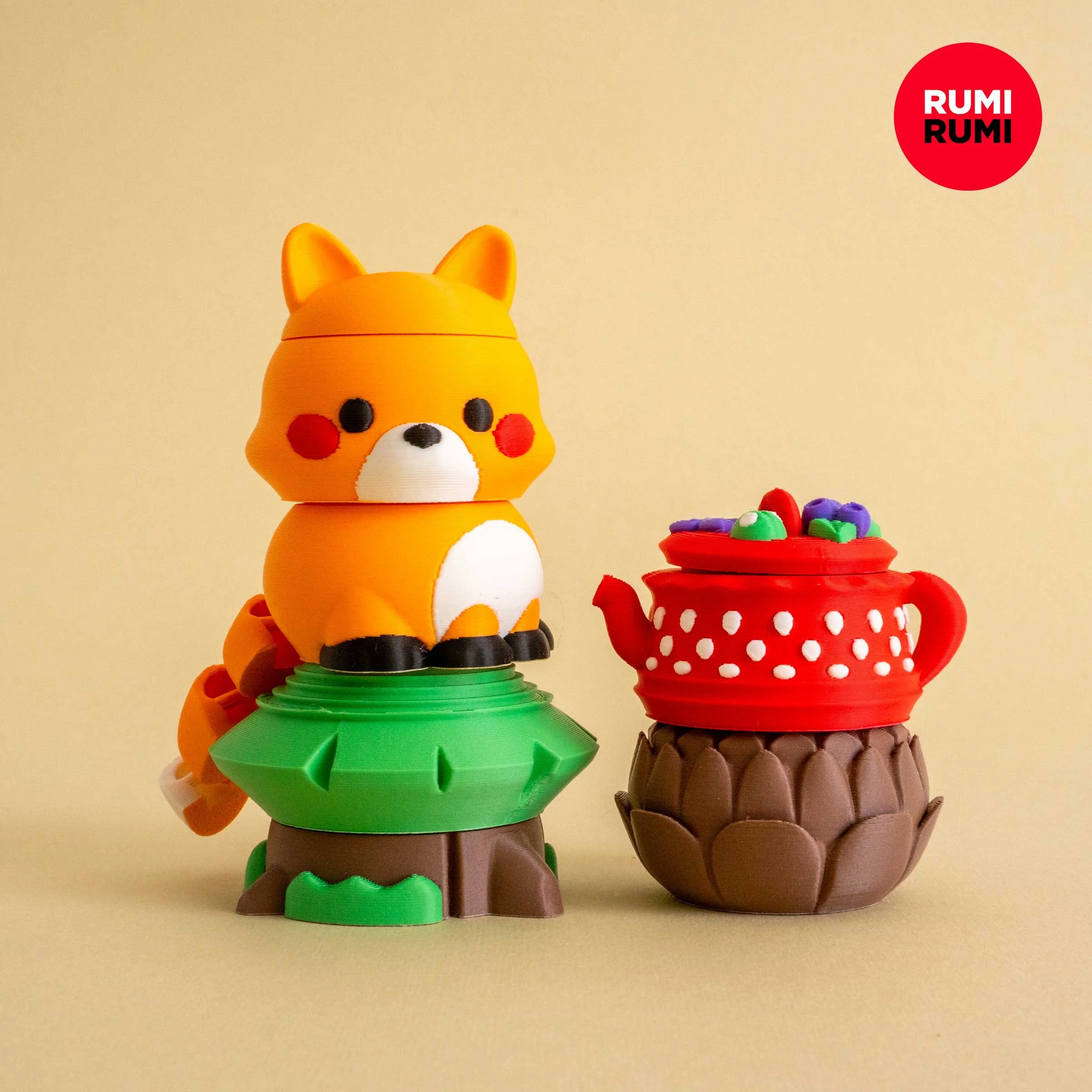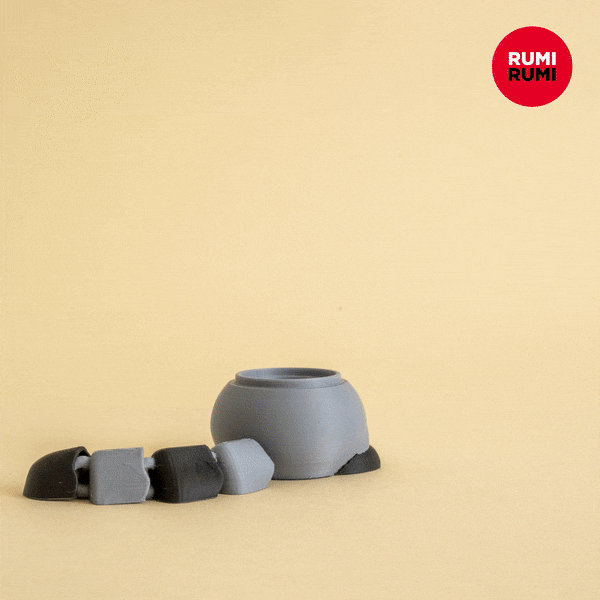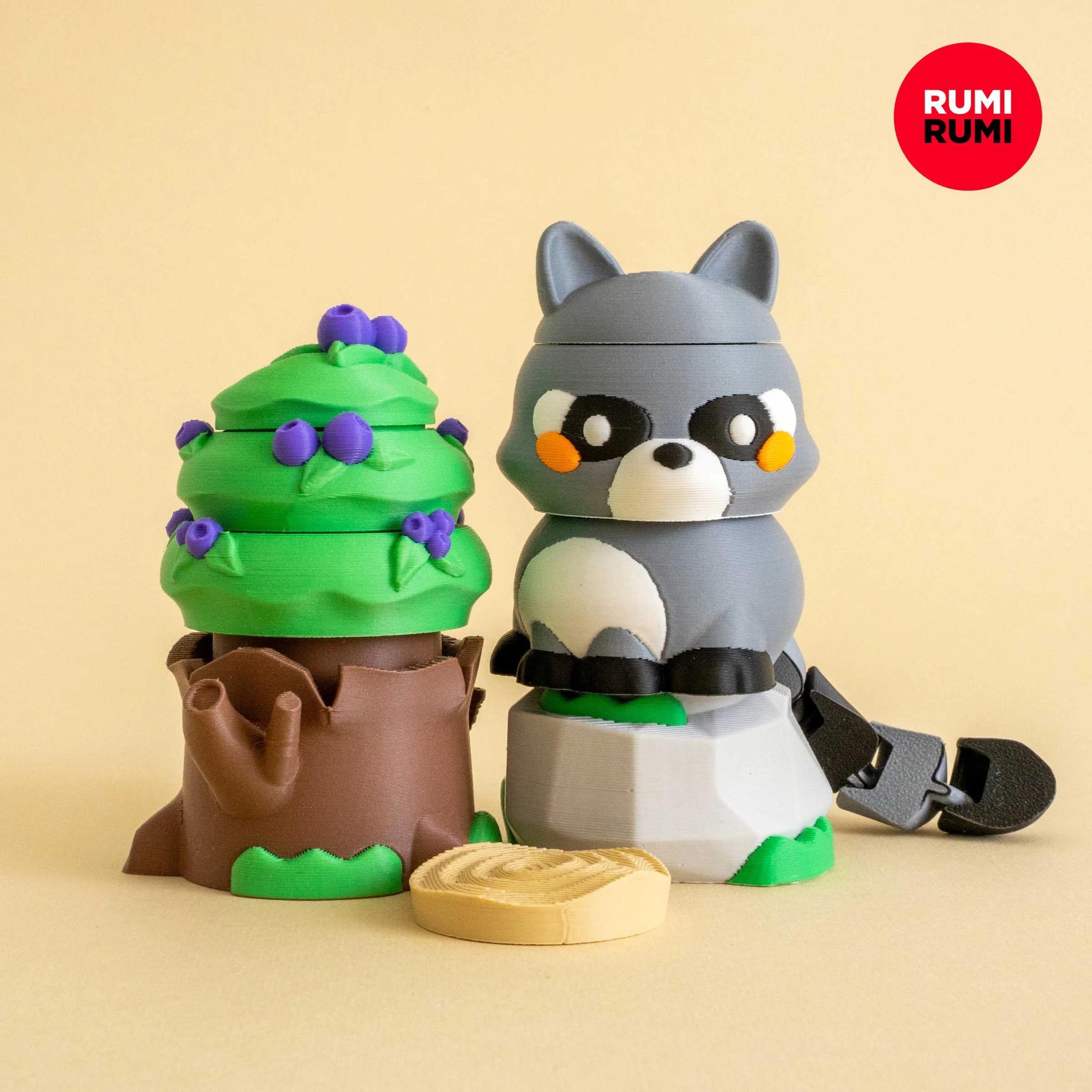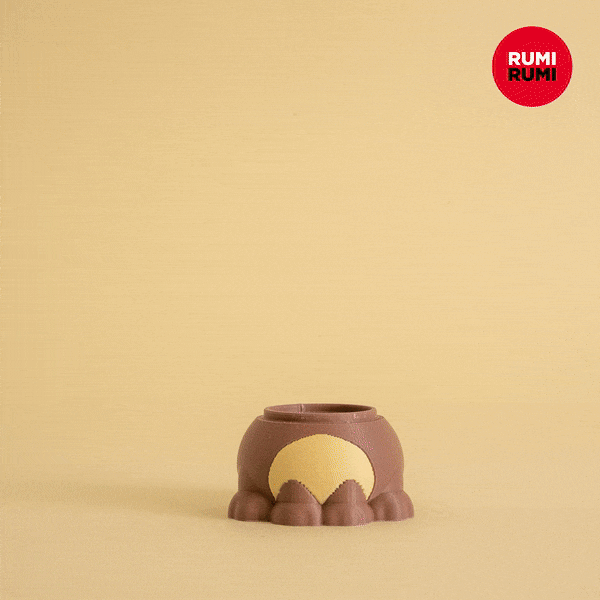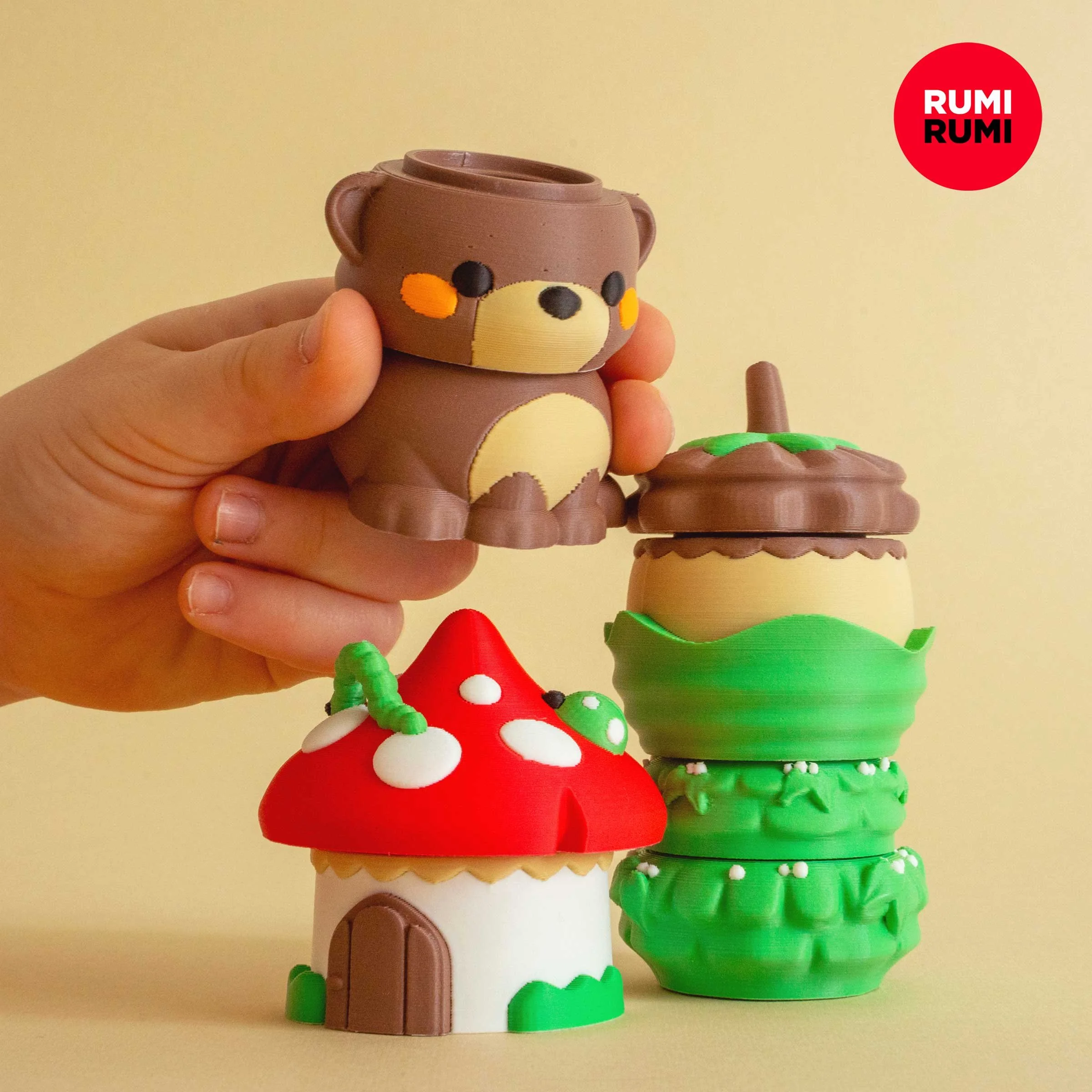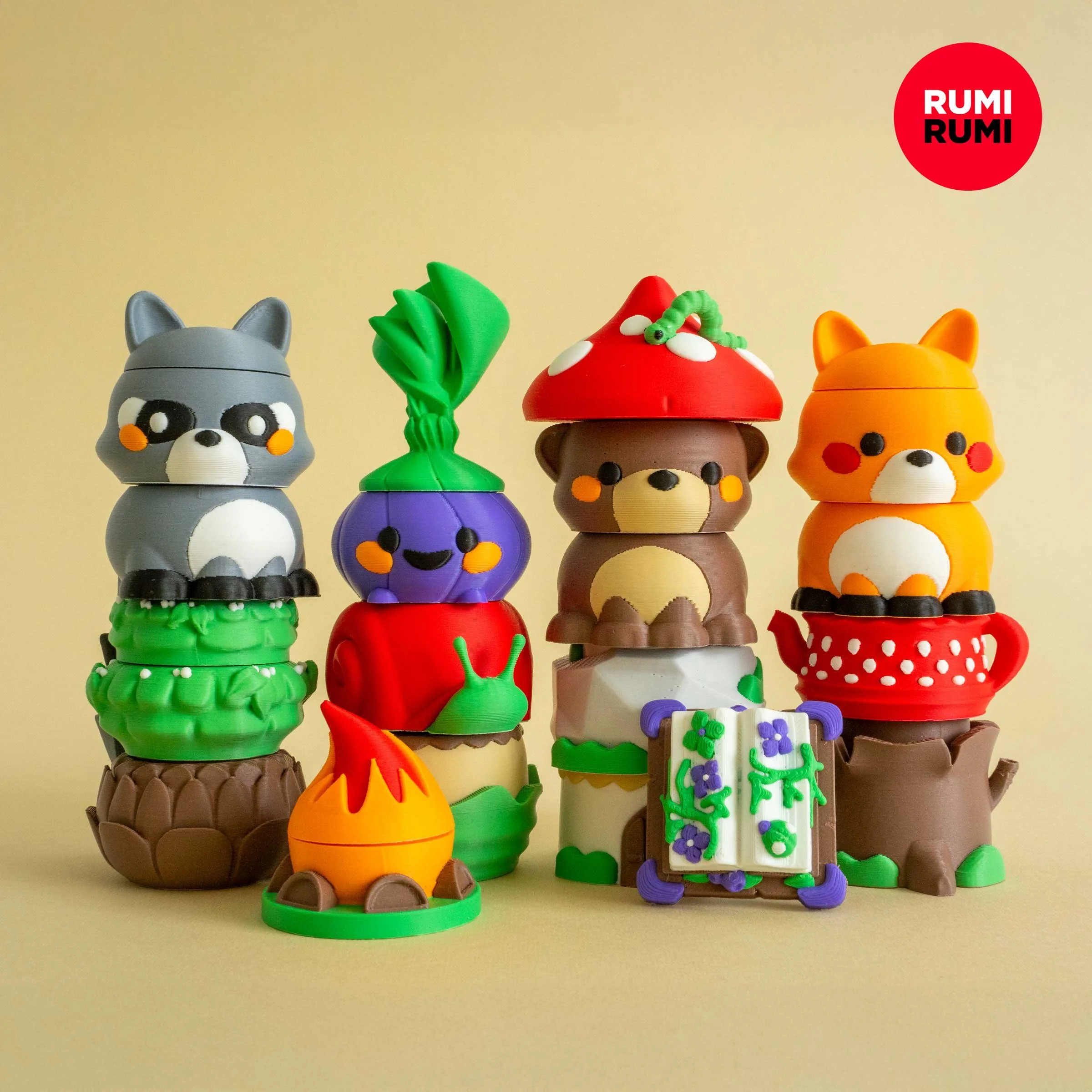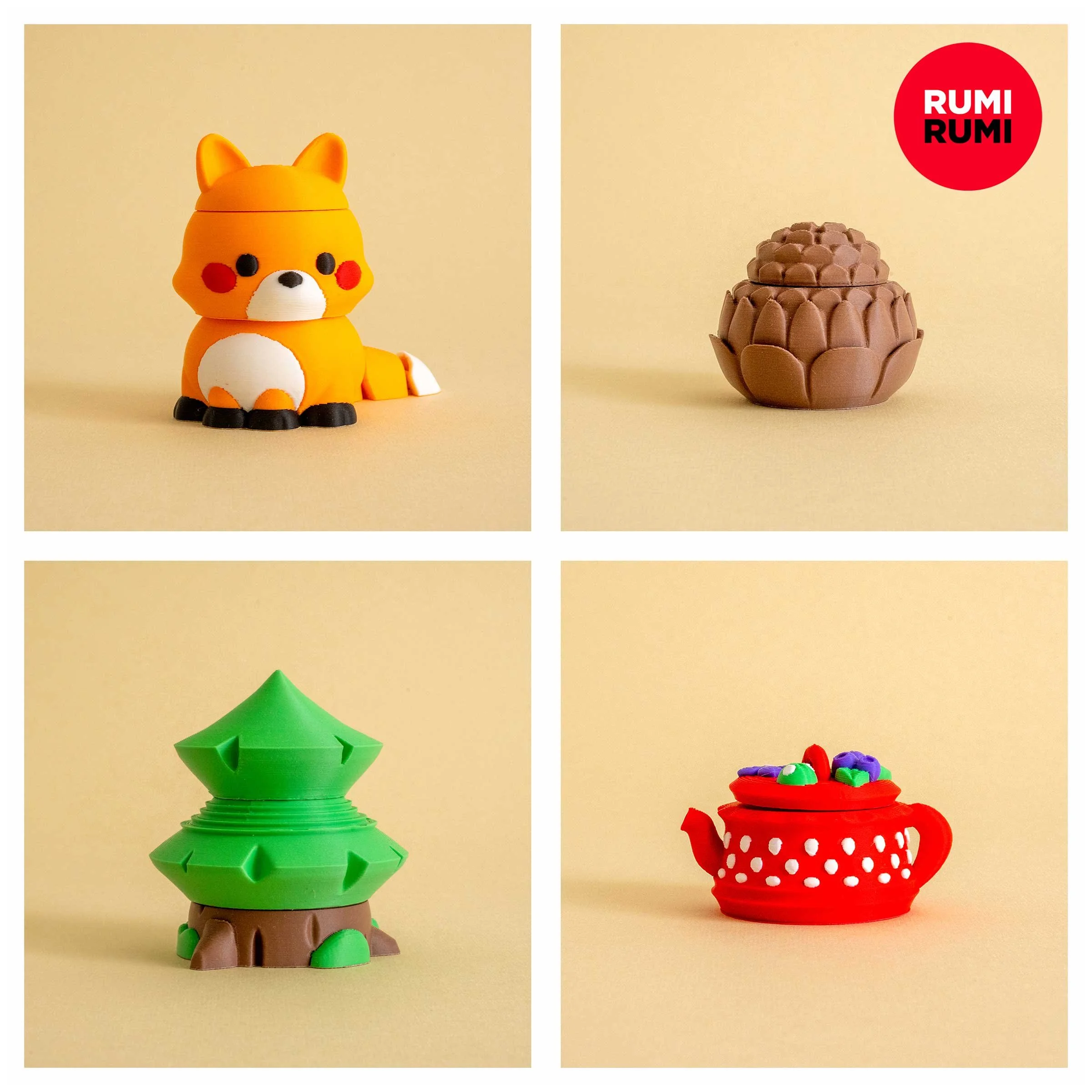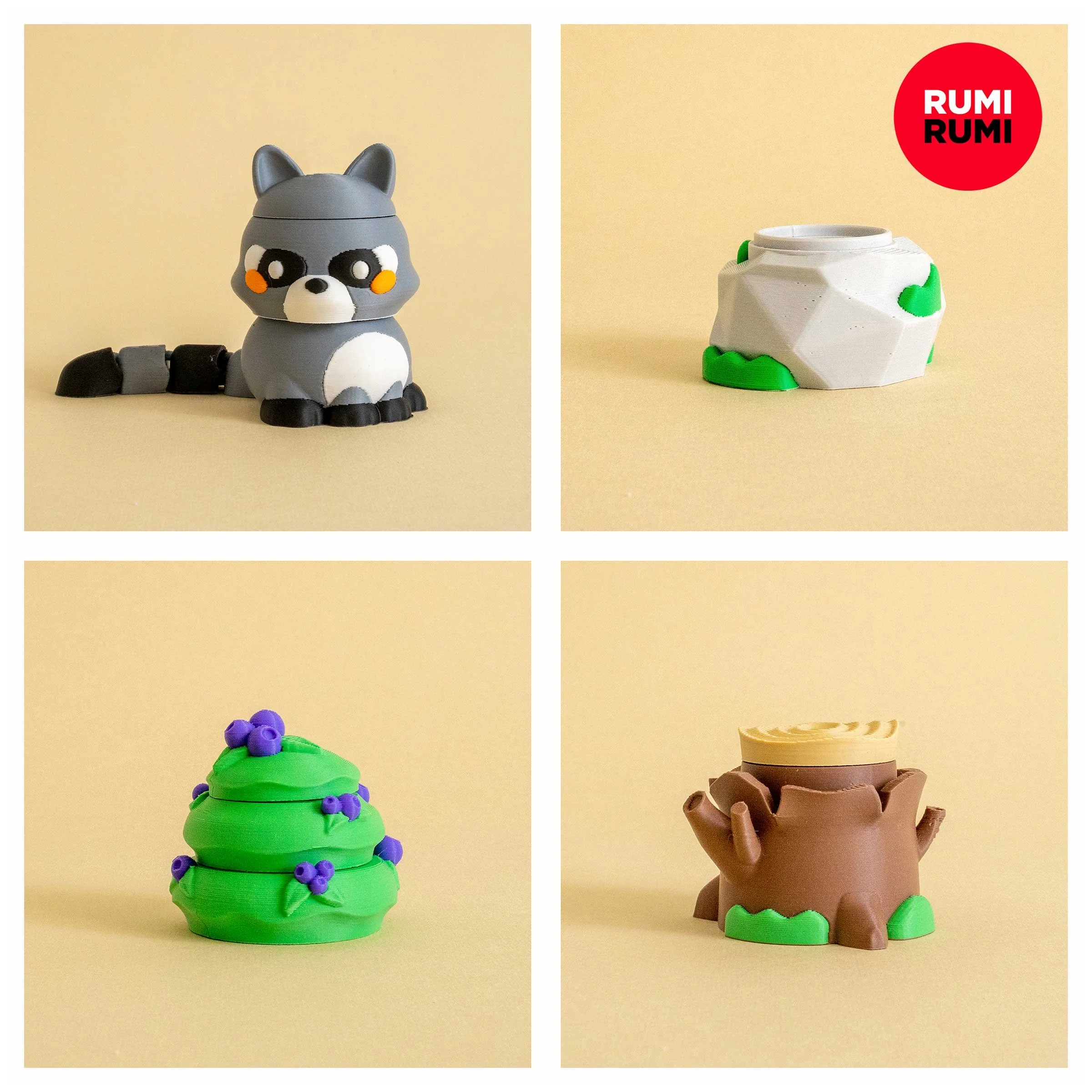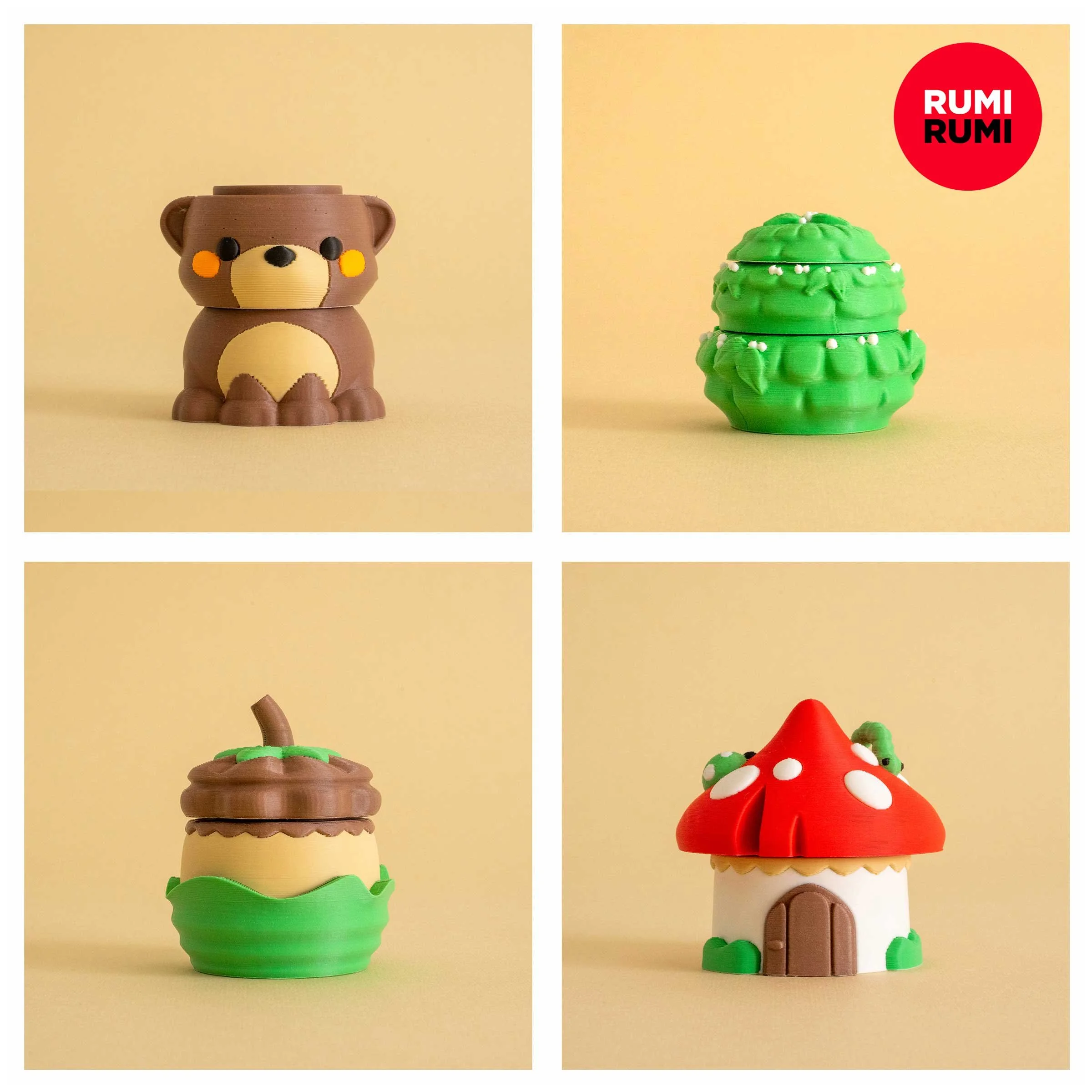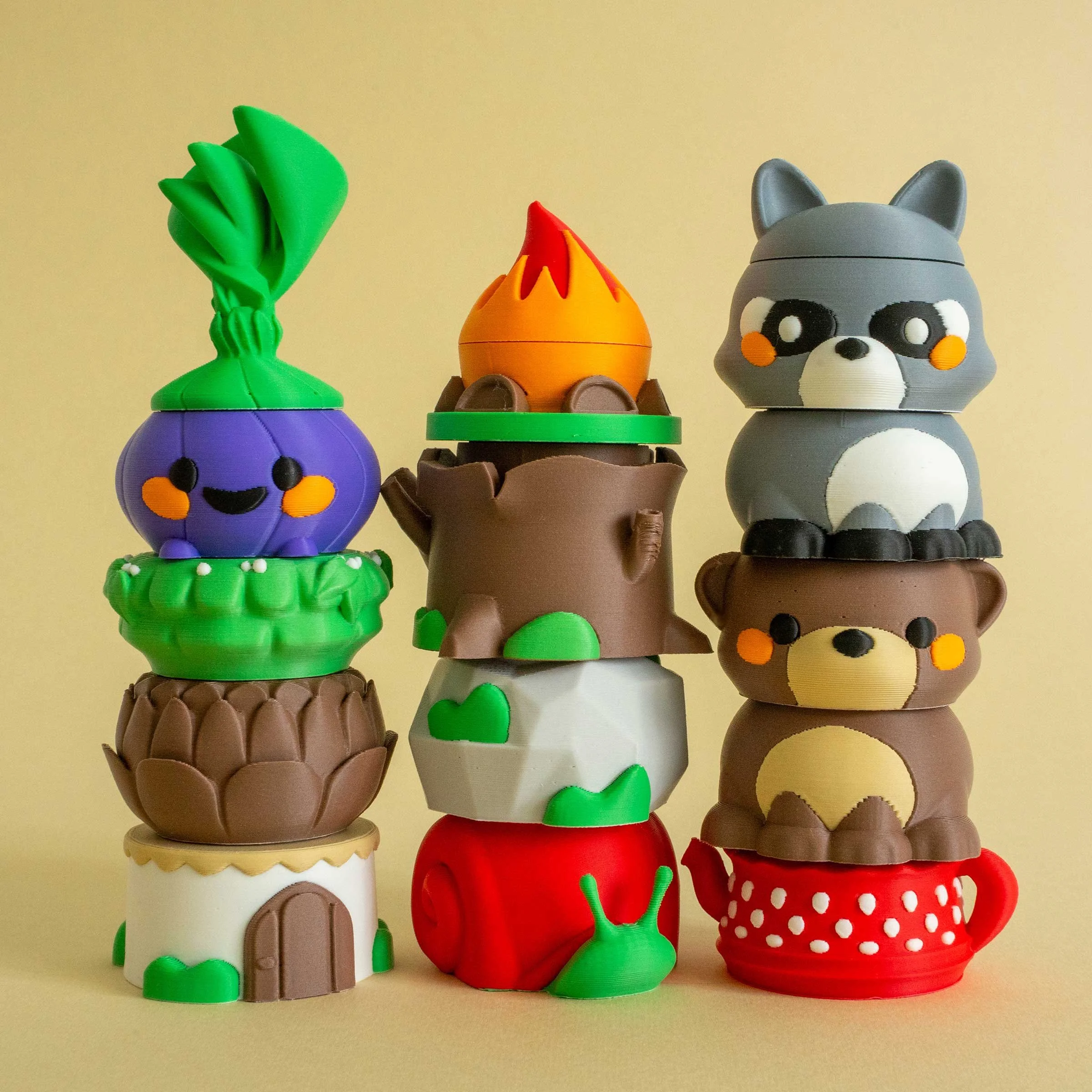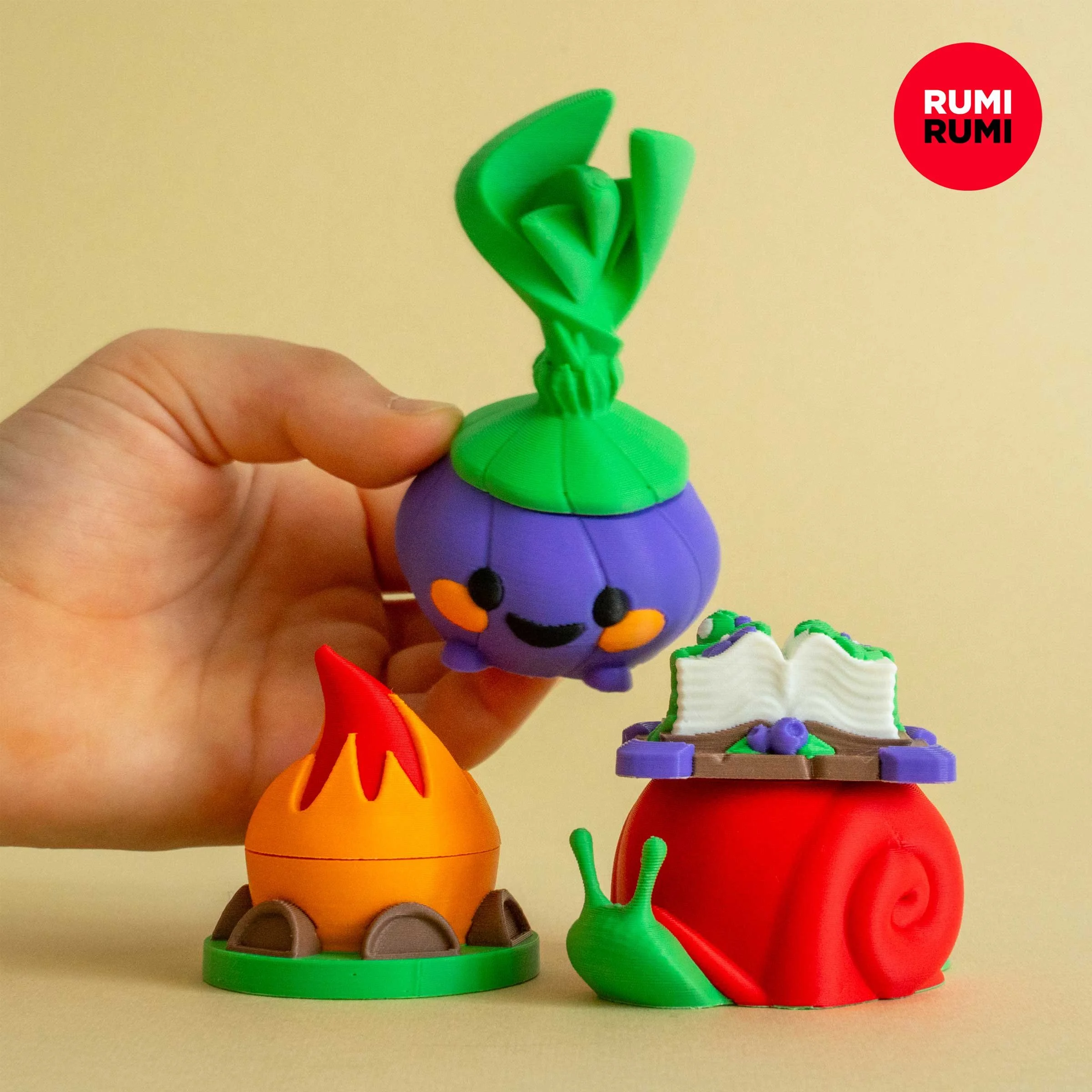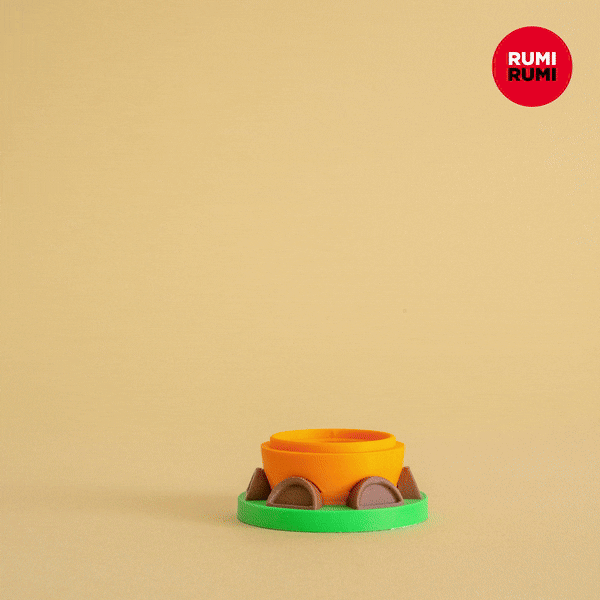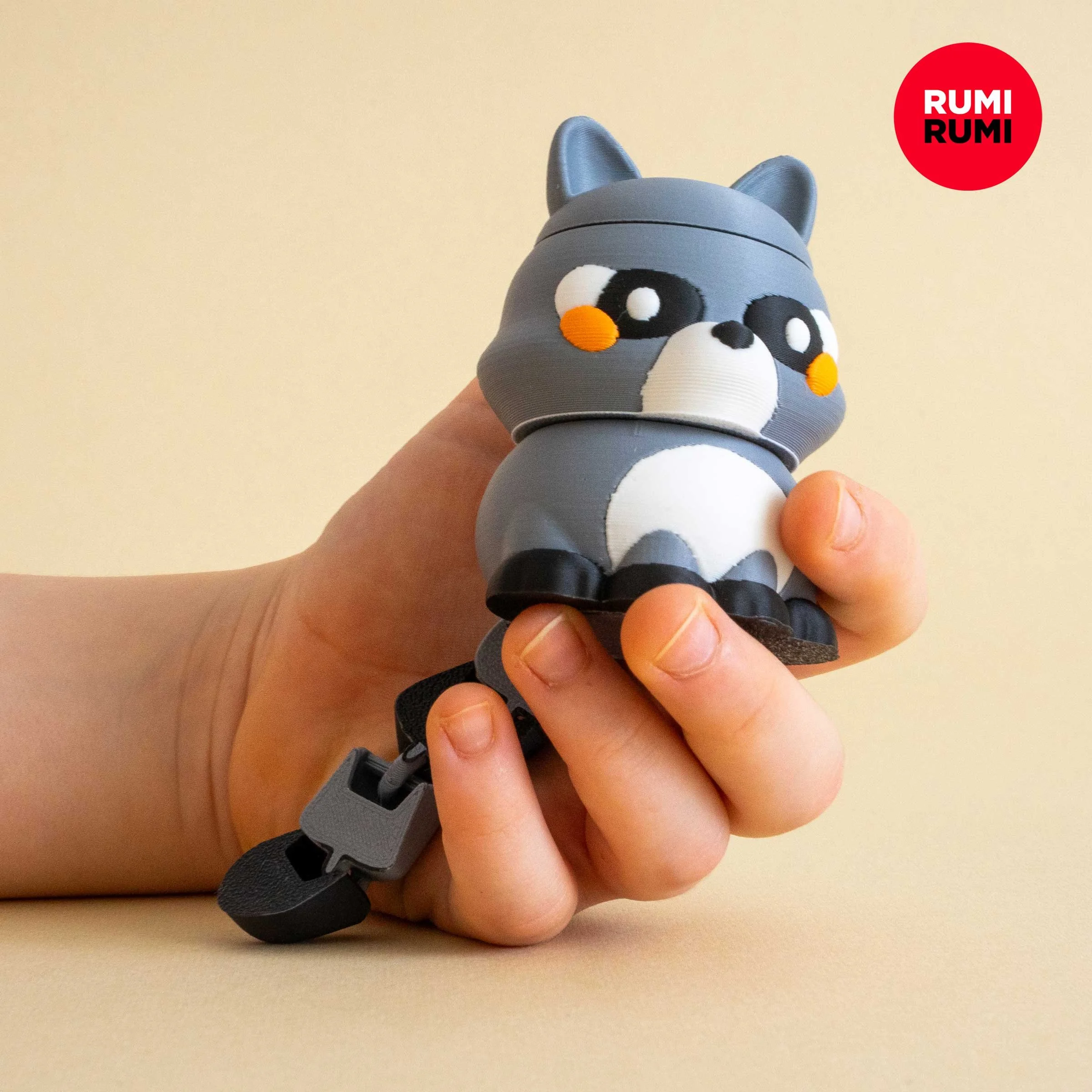
Rumi Blocks. Forest Series
Introduction
This series was born from a wish to create a warm, playful object — something you can build, rearrange, and hold, while still feeling the touch of hand-made design.
I wanted to make toys that are simple in shape, full of character, and inviting to play with.
That’s how the Forest Series appeared — part of the Rumi Blocks system, where every element connects to another and becomes a piece of an imaginative world.
Concept
My goal was to create toys that bring joy to children — cute, friendly creatures and a modular building system that inspires play.
Each set can be combined with others. Kids can stack, swap, and rebuild to create new scenes and stories. It’s all about open-ended play, creativity, and the joy of touch.
Why it’s made this way
Combinable instead of fixed.
The child decides who lives where and what happens next.Stories and roles.
Characters bring personality, surroundings set the scene — together they tell a story.Simple forms and solid shapes.
Easy to handle, not overloaded with tiny details.Durable design.
No glue, no clips — just friction-fit parts that hold firmly.Open system.
Every new set is automatically compatible with the previous ones.
For children
Designed for ages 3+, with adult participation.
Motor skills and coordination. Building, rotating, connecting elements.
Imagination and speech. The child and adult tell stories together, assign roles, combine scenes.
Decision-making. There’s no single “right” way to build.
Calm tactile play. Rounded shapes, matte surface, satisfying weight.
Design & Engineering
Unified connection standard.
Bases, middles, and tops are interchangeable across the series.Vertical stacking.
Toys build up like towers and stand firmly.Clean silhouettes.
Readable shapes with minimal sharp edges.Color language.
Each part brings its own accent, yet all stay visually coherent.Production.
Printed on multi-color FDM printers, designed to be printed without supports.Hidden storage.
Some pieces are hollow — small containers where kids can hide or keep little treasures.
Forest Series Sets
Each set includes one character and its forest surroundings.
All parts are cross-compatible.
🐻 Bear — mushroom house, acorn, leafy bush.
🦊 Fox — red teapot, pinecone, spruce tree.
🌿 Mandrake — snail, campfire, book.
🦝 Raccoon — tree stump, stone, berry bush.
What mattered in the process
Balance of character and function.
Each figure feels alive yet follows a consistent modular logic.Rhythm and scale.
Every set works alone but also forms a coherent group.Consistency.
New elements always fit into the existing system.
About the project
Rumi Blocks is a designer collection — created by one author, not a company.
The toys are printed in PLA, assembled and tested by hand.
This is not an industrial or certified toy product —
it’s an independent design project, made with attention to form, play, and imagination.
Use cases
Calm, creative play at home.
A gift for a child who loves to build and experiment.
A collectible design piece for those who appreciate 3D printing and author-made toys.
Disclaimer
Printed in PLA. These are designer collectibles, recommended for play under adult supervision.
Closing thoughts
The Forest Series is just one chapter of a growing modular world.
Each new set expands the system and keeps the idea of playful, imaginative construction alive.
For me, it’s a way to bring together design, storytelling, and a bit of childhood curiosity — the kind that makes you want to build something again and again.
If you’d like to explore or support the project, you can find more here:
Cults3D – Rumi-Rumi Store
Patreon – Support and licenses
Boosty – Commercial use and project support
If you enjoyed this project or have a collaboration idea, you’re welcome to reach out —
the contact form:


